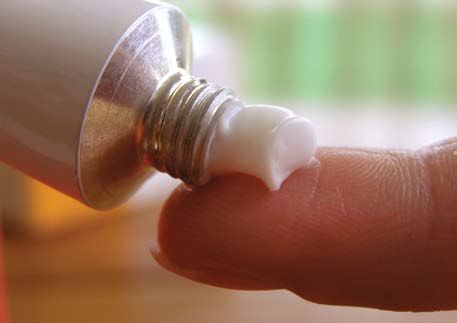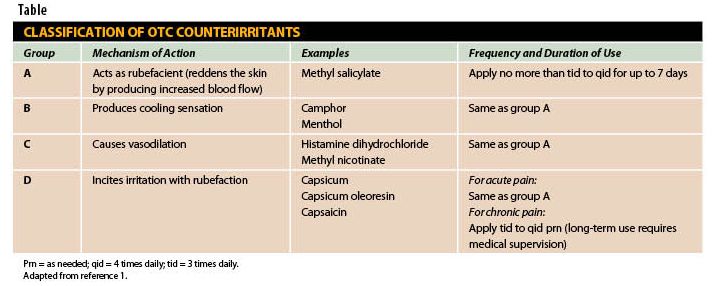Publication
Article
Pharmacy Times
Understanding Topical Analgesics
Author(s):
When patients experience muscle and joint pain, pharmacists can recommend topical analgesics to help provide relief for their symptoms.

Patients will often use OTC topical analgesics for the treatment and management of musculoskeletal injuries and disorders. These products may have local analgesic, anesthetic, antipruritic, and/or counterirritant effects.1 Counterirritants are approved for the topical treatment of minor aches and pains of muscles and joints. They are often employed for the treatment of acute musculoskeletal injuries and as an adjunct therapy in the treatment of chronic musculoskeletal disorders.1 Counterirritants differ from other external analgesics in that pain relief results more from nerve stimulation than depression.1 Counterirritants are categorized into 4 groups (Table).
Topical analgesics for musculoskeletal pain can be used alone or in conjunction with oral analgesics when appropriate and warranted. External analgesic products may contain 1 or more of the following ingredients: methyl salicylate, camphor, menthol, methyl nicotinate, capsicum, and trolamine salicylate.
Topical analgesic products are available in a variety of formulations, including gels, ointments, creams, lotions, and patches in single-entity or combination formulations. 1 Topical heat therapy patches, such as ThermaCare (Wyeth Consumer Healthcare), are also available in various sizes for treating joint and muscle pain and provide 8 to 12 hours of continual, portable heat therapy. Products new to this OTC category include Icy Hot Spray and Icy Hot Powder Gel (sanofi-aventis), Salonpas Pain Relief Patch (Hisamitsu America Inc), and Bengay Pain Relief + Massage (Johnson & Johnson Consumer Companies Inc). OTC topical analgesics are intended to be used for mild-to-moderate pain for no longer than 7 days, unless otherwise directed by a physician.1 The factors that a pharmacist may consider when recommending a topical analgesic include dosage form, cost, ease of use, and odor of product, as well as the patient’s medical history, including possible allergies.1
Patients on anticoagulation therapy should be advised not to use topical products that contain salicylates, because concomitant use has been associated with prolonged prothrombin time.1 Patients should be advised to use these products as directed and to apply topical products only to intact skin. Areas treated with counterirritants should not be covered with tight bandages or occlusive dressings.1 The use of these products should be discontinued if the patient experiences excessive redness or blistering of the skin. Patients should also be advised not to use heating devices in conjunction with topical counterirritants.1 Finally, pharmacists should encourage patients to seek medical care from their primary health care provider if pain worsens or persists after 7 days of self-treatment. PT

References
1. Wright, Eric. Musculoskeletal Injuries and Disorders In: Berardi R, Newton G, McDermott JH, et al, eds. Handbook of Nonprescription Drugs. 16th ed. Washington, DC: American Pharmacists Association; 2006: 94-113.
Ms. Terrie is a clinical pharmacy writer based in Haymarket, Virginia.







